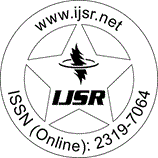Downloads: 131 | Views: 2448
Research Paper | Electronics & Communication Engineering | India | Volume 3 Issue 12, December 2014 | Popularity: 6.8 / 10
BER Performance Analysis of Alamouti Coding Technique in Rayleigh Fading Channel
Sumit Kumar Roy, Nitin Jain
Abstract: For several years, wireless communication is facing major problem of scarce bandwidth availablity and with exponential growth of this area, many new technologies are used to improve communication performance and overcome the bandwidth limitation in wireless communication environment, such as temporal dispersion, multipath propagation, and frequency dispersion. space-time coding (STC) is a breakthrough technology, which transmits and receives information with more reliability and at higher data rates by using multiple antennas at both sides. Multiple antenna (MIMO) systems with significantly reduced complexity and (STBC) space time block coding, for communication over fading channels (Rayleigh channel is used in this paper) using multiple transmit antennas have been used. We have tested the performance of Alamouti coding technique for the Rayleigh channel. The signals on the transmitter (Tx) antennas at one end and the receiver (Rx) antennas at the other end are combined in such a way that the BER (quality) or the data rate (bits/sec) of the communication are improved. The simulation results are used to compare and analyze the performance.
Keywords: STBC, MIMO, Wireless, Fading Channel, Alamouti
Edition: Volume 3 Issue 12, December 2014
Pages: 480 - 483
Please Disable the Pop-Up Blocker of Web Browser
Verification Code will appear in 2 Seconds ... Wait
